Doctor of Clinical Health Psychology María J. García-Rubio together with specialist in clinical neuropsychology and major neurocognitive disorder Nancy Navarro explain in this article what dementia and the clinical applicability of the GDS scale are.
In this outreach article we aim to describe dementia from a neuroanatomical and psychobiological perspective in order to later justify the application of the GDS Scale during the neuropsychological assessment of the patient diagnosed with dementia.
Although it is a validated scale frequently used by professional neuropsychologists and also by other healthcare professionals, it must be defined and adapted to the diagnosis in order to extract the maximum evaluative value from it.
What is dementia?
Dementia is a general term that identifies conditions whose set of signs and symptoms are characterized by a progressive decline in mental and executive capacity of the cognitive domains.
This neurological disease reduces the degree of autonomy and independence of the people who suffer from it, thus affecting their ability to perform instrumental activities of daily living and therefore the patient usually requires ongoing support from their caregiver (Alzheimer’s Association, 2014).
From a psychobiological perspective, nerve cells or neurons are the first affected during the evolutionary pattern of dementia, although the key marker is the presence of neurofibrillary tangles, and also the formation of senile plaques observed in cortical-type dementia (Goriely et al., 2020).
Likewise, it has been shown that the presence of cerebral microinfarcts negatively affects the subcortical area of the brain, which in most cases leads to the appearance of vascular dementia (Bir et al., 2021).
As a consequence, this produces a massive destruction of the neurons of the cerebral cortex, which ends up modifying its structure and function.
On the neuroanatomical level, the development of dementia entails a pathological anatomical process of the brain in which, as a common factor for all types of dementia, the temporal poles are disseminated, with damage also occurring in the gray matter of the parietal and prefrontal neocortex, in the case of Alzheimer’s Disease and Frontotemporal Disease (Kang et al., 2019).
In other neurological diseases such as Lewy body dementia, neuronal damage is more focused in the brainstem regions (Rodríguez, 2020).
What is the neuropsychological assessment of dementia like?
Dementia has been the focus of numerous investigations, with the aim of understanding its pathophysiology and its physical and cognitive consequences in most cases. Subsequently, research groups and lines of research were interested not so much in the concept but in its assessment and treatment.
The number of dementia cases was increasing, so there had to be at least one neuropsychological assessment instrument to complement the medical protocol dedicated to the management of the patient with dementia.
Therefore, in 1982 Barry Reisberg and collaborators published an assessment tool currently called the “Global Deterioration Scale or GDS”.
What is the GDS scale?
This instrument aims to offer a neuropsychological measurement alternative for each neurodegenerative stage linked to dementia.
Therefore, the specific cognitive capacity, executive function, attentional processes and memory are taken into account, from the onset of the first characteristics of cognitive decline to its final phase (Custodio et al., 2017).
In turn, the GDS scale takes into account the boundaries of each evolutionary stage of dementia that occur as a slow and continuous process. With these characteristics, the GDS scale intends to offer guidance support to professionals, neuropsychologists or other healthcare workers who work with patients diagnosed with dementia.
According to Reisberg et al. (1999), the concept of retrogenesis is a fundamental basis for the development of the scale, as it explains that the course of dementia is accompanied by a reduction in cognitive capacity.
Moreover, the decline in cognition is totally inverse to the process of learning acquisition reached from childhood and adulthood, which is reflected not only in higher cognitive processes but also in brain development (Strikwerda-Brown et al., 2019).
For example, it is possible that the person diagnosed with dementia initially loses information coming from short-term memory, in intermediate stages will have problems accessing long-term memories, while in the final stages will be unable to control physiological processes acquired in early childhood such as autonomy for feeding or sphincter control.
Stages of the GDS scale
The original version of the GDS scale by Reisberg et al. (1982) includes 7 stages linked to the development of dementia. In this way, each of them explains the alteration corresponding to the physical, cognitive and mental course of the disease.
Likewise, the description of cognitive status by stage is accompanied by an approximate Mini-Mental (MEC) score by Lobo et al. (1999) in order to be able to link both instruments in the same patient. Below is a brief overview of each of them and their scores:
- GDS 1. Absence of cognitive deficit. In this phase the person shows no subjective or objective deterioration, which means they present an optimal cognitive state. Corresponds to a score of 30-35 on the MEC assessment.
- GDS 2. Very mild cognitive deficit. During this period the person reports memory complaints regarding misplacing objects or forgetting names which generally go unnoticed in the family, work and social environment. In turn, no cognitive deficit is detected by clinical examination. Corresponds to a score of 25-30 on the MEC assessment.
- GDS 3. Mild cognitive deficit. Changes are observed in the performance of occupational, work and social-type tasks such as, for example: semantic difficulty, decreased ability to retain new information or remember newly met people, spatial location lapses, decreased concentration. May be accompanied by moderate anxiety. Corresponds to a score of 20-27 on the MEC assessment.
- GDS 4. Moderate cognitive deficit. The person has difficulty carrying out tasks related to planning aspects such as: finances, cooking, travel, calculation operations. In turn, orientation in time and person decreases, recent events, possible prosopagnosia and emotional lability. Corresponds to a score of 16-23 on the MEC assessment.
- GDS 5. Moderately severe cognitive deficit. In this stage, the person’s executive capacity decreases in the following activities: choosing clothing, remembering directions, phone numbers, names of relatives; however, they recognize their own name and that of their close family. Corresponds to a score of 10-19 on the MEC assessment.
- GDS 6. Severe cognitive deficit. For this phase, the person needs support to perform instrumental activities of daily living, such as: dressing, bathing, remembering names of close family or caregivers. They may also show decreased urinary continence, and present changes in personality and affectivity. Corresponds to a score of 0-12 on the MEC assessment.
- GDS 7. Very severe cognitive deficit. The person at this stage presents loss of verbal and motor abilities such as walking without assistance, sitting, standing and holding the head upright. Loss of smile. Needs assistance for personal hygiene. Neurological signs are observed. Corresponds to a score of 0 on the MEC assessment.
Clinical applicability of the GDS scale
As anticipated, the GDS scale has the particularity of complementing cognitive assessment instruments, such is the case of the MEC, increasing the evaluative potential of these cognitive screening tools in a neurological disease as complex as dementia (Peña-Casanova et al., 2014).
Furthermore, this potential is more relevant in the advanced stages of dementia in which there is great individual variability among patients. Therefore, it is so important to have tools such as the GDS scale, since it serves as a guide for the evolutionary process of dementia for the professional responsible for the patient.
Thus, based on the deterioration indicated by the GDS scale, the professional can establish new intervention guidelines adapted to the characteristics of the patient’s stage of dementia, as well as design other support strategies according to the needs of daily life, care and treatment.
Likewise, it should be noted that although the application of the GDS scale has been properly associated with Alzheimer’s disease due to its progressive evolution, this neuropsychological screening tool can be applied to other cases such as Lewy body disease or Vascular-type dementia (Sousa et al., 2020).
Conclusions
The GDS scale has proven to be valid and reliable for specifying the evolutionary process of dementia, especially for its ability to differentiate and describe the course and progression of the disease with clinical observations. In addition, it is associated with other clinical implications such as improvement in patient prognosis through new and individualized intervention plans.
In fact, GDS scale scores not only serve to determine the degree of cognitive deterioration, but also to optimize therapeutic decision-making and the necessary pharmacological choice to contribute to improving the quality of life of these patients.
Bibliography
Alzheimer’s Association (2014). 2014 Alzheimer’s disease facts and figures. Alzheimer’s & dementia: the journal of the Alzheimer’s Association, 10(2), e47–e92.
Bir, S. C., Khan, M. W., Javalkar, V., Toledo, E. G., & Kelley, R. E. (2021). Emerging concepts in vascular dementia: a review. Journal of Stroke and Cerebrovascular Diseases, 30(8), 105864.
Custodio, N., Becerra-Becerra, Y., Alva-Diaz, C., Montesinos, R., Lira, D., Herrera-Pérez, E., … & Castro-Suárez, S. (2017). Validation and accuracy of the Global Deterioration Scale (GDS) to establish dementia severity in a population of Lima. Ces Medicina, 31(1), 14-26.
Goriely, A., Kuhl, E., & Bick, C. (2020). Neuronal oscillations on evolving networks: dynamics, damage, degradation, decline, dementia, and death. Physical review letters, 125(12), 128102.
Kang, S. H., Park, Y. H., Lee, D., Kim, J. P., Chin, J., Ahn, Y., … & Seo, S. W. (2019). The cortical neuroanatomy related to specific neuropsychological deficits in Alzheimer’s continuum. Dementia and neurocognitive disorders, 18(3), 77-95.
Lobo, A., Saz, P., Marcos, G., Día, J. L., De La Cámara, C., Ventura, T., … & Aznar, S. (1999). Revalidation and standardization of the cognition mini-exam (first Spanish version of the Mini-Mental Status Examination) in the general geriatric population. Medicina clinica, 112(20), 767-774.
Rodriguez Espinoza, T. F. (2020), Pharmacological and non-pharmacological treatments of cognitive impairment and neuropsychiatric symptoms. Neurology of cognition and behavior, Editorial Medica Panamericana,
Reisberg, B., Franssen, E., Hasan, S. et al. Retrogenesis: clinical, physiological and pathological mechanisms in brain aging, Alzheimer’s and other dementing processes. Archivos Europeos de Psiquiatría y Neurociencias Clínicas 249 (Supplement 3), S28–S36 (1999).
Reisberg, B., Ferris, S. H., de Leon, M. J., & Crook, T. (1982). The Global Deterioration Scale for assessment of primary degenerative dementia. The American journal of psychiatry, 139(9), 1136–1139.
Sousa, S., Teixeira, L., & Paúl, C. (2020). Assessment of major neurocognitive disorders in primary health care: predictors of individual risk factors. Frontiers in Psychology, 11, 1413.
Strikwerda-Brown, C., Grilli, M. D., Andrews-Hanna, J., & Irish, M. (2019). “All is not lost”—Rethinking the nature of memory and the self in dementia. Ageing Research Reviews, 54, 100932.
Peña-Casanova, J. Gramunt Fombuena, N. & Gich Fullá, J. (2004). Neuropsychological Tests. Foundations for evidence-based clinical neuropsychology. Masson: Barcelona.
If you liked this article about dementia and the clinical applicability of the GDS scale, you may also be interested in the following articles:
“This article has been translated. Link to the original article in Spanish:”
Demencia y evaluación neuropsicológica: la escala GDS y su aplicabilidad
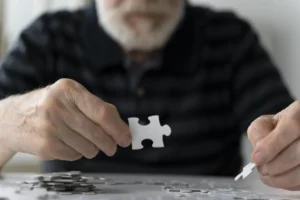

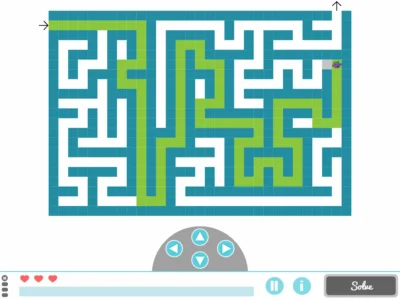
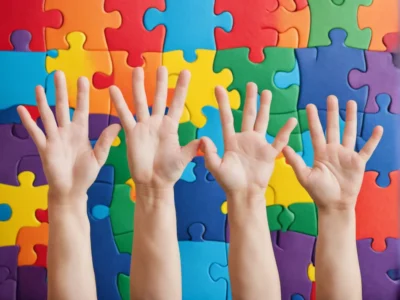
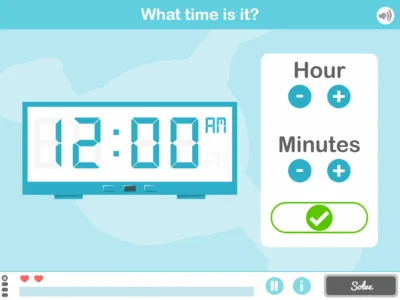
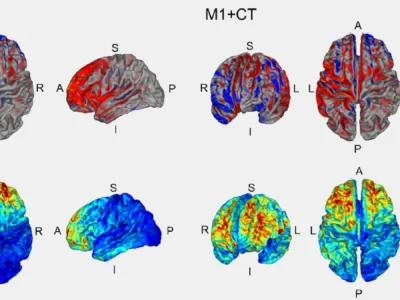

 Worksheet for working on discrimination in children: What Number Do You Hear?
Worksheet for working on discrimination in children: What Number Do You Hear?
Leave a Reply